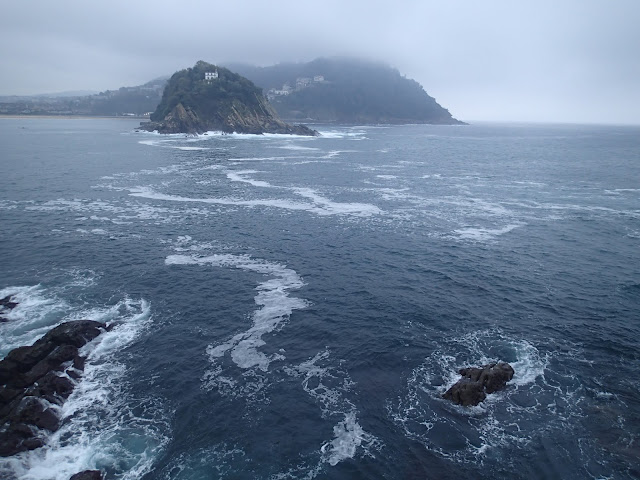 |
| Part of the Rafina High School Environmental Education group, one of their teachers and Yours (R) |
October, 27th 2018. Rafina River. 25 Km East of Athens.
I spend a lot of time out-doors and sometimes its nice to do this with friends, family and students. The Rafina High-School has an ambitious new project to study the river and to explore ways to make society care about it. Today I worked with the students: Themistocles, Mariana, Lambrini, Georgia, Tasos and Filippa. I tried to make a lesson out of it with the help of local teachers and the guidance of naturalist-biologist local river expert, Antonis Lazaris. You can learn so much with Antonis! So the sun was shining, the waters were cool and clear- it was a little piece of heaven. Nothing less.
I'll try to do this soon again.
 |
| Its usually the teacher's fault! Mr. Antonis Lazaris, high school biology TEACHER extraordinaire! |
 |
| On the sandbar at the river-mouth. |
 |
| Antonis told me that the kids need to "get in the water"...Here we watched a school of fish, learned about algae (filamentous and Enteromorpha), saw herons foot-prints, darters & damselflies ("livelloules"), mudflat patterns, Salicornia shrublets, little egrets ("Lefkotsikniades"). And we also talked about Zen Buddism. |
 |
| Team walking above the busy Rafina bridge. yes...its Wilderness inside the city! |
 |
| A bank of Arundo donax reed-cane (L) and...a beautiful date palm reminds us we are in the Mediterranean for sure! What a luxurious "archontiko" place inside the city. Should this not be highlighted as a life-line for recreation? |
 |
| Antonis spotted some ducks, then we identified wagtails and other birds, later someone saw a mouse. We talked about habitat diversity, shelter and cover for aquatic life. Cattail reeds ("Psathia") and their wind-dispersal. We found a Tettigonid cricket! Wild things were happening! |
 |
| Most of it was "clean waters" at least on this day. Some point-source pollution flows in through gutters-pipes though ...(so it is periodicially polluted). |
 |
| Concrete bank near point-source pollution inflow. So sooooo different then the natural bank and natural riparian "buffer zone". But soon downstream the river self-heals. |
 |
| Upside-down binoculars function as a microscope! Many plants on the rich riparian zone: Castor Oil Plants, Solanum, Oxalis ("Ksinithra"), first-flowers of Sinapis ("Vrouves"). |
 |
| Frog! A small one, hiding in the algae.... There were 3 or four others too. Water is already quite cold for them...(all will soon settle for the short winter). |
 |
| Upstream of the upper footbridge. Arundo donax thicket. Jungle-like...food for elephants! ...Nowadays here dwells the Black-Crownend Night Heron ("Nychtokorakas") - we saw one. |
 |
| Re-discovery the huge chaste tree bush (Ligaria): one of the few native species in the river's riparian zone. Smells so distinctive... |
 |
| What is it? |
 |
| A special kind of algae, a Charophyte! Rare. |
 |
| Walking back. We explored from 10:30 to 1:30...Non-stop and totally enthused. |
 |
| Lost world, threatened landscape.... from the busy bridge. Why don't more people care? |
 |
| A a final reminder. The river and Rafina in the 1950s. (Photo from an the archive of the Doctor, Stathis Dimitrakos). |





















































